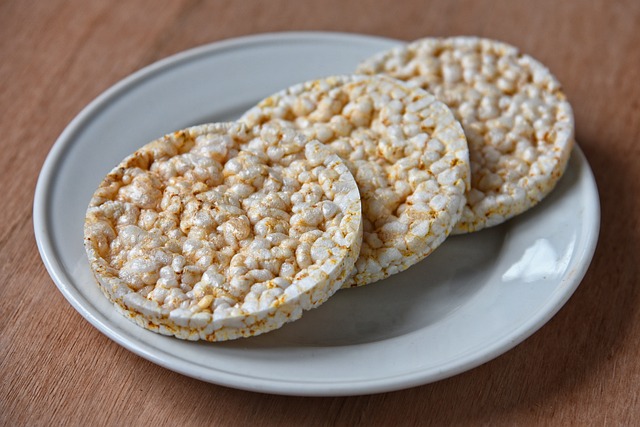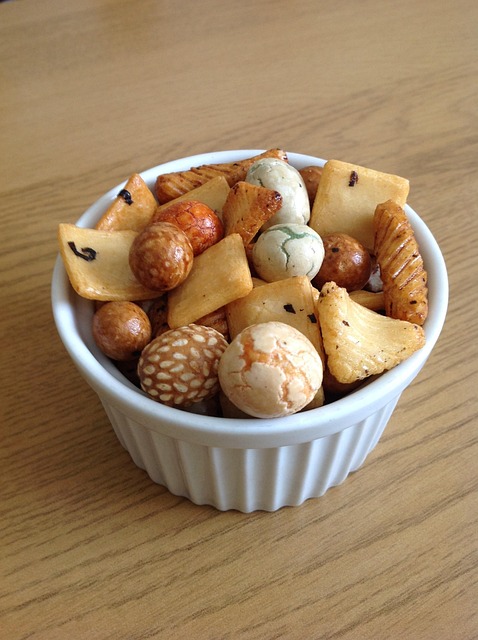
Introduction: Discovering the Crunch
In the realm of snacks, few options are as universally loved and delightfully versatile as rice crackers. These crispy treats, originally from Japan, have carved out a niche in pantries across the globe. Whether enjoyed as a savory snack, a sweet indulgence, or even as part of a gourmet platter, rice crackers offer something for everyone.
Beyond their irresistible crunch and flavor, rice crackers are often lower in calories and high in complex carbohydrates, making them a satisfying yet guilt-free snack. From ancient traditions to modern kitchens, rice crackers have evolved into an iconic treat that bridges generations and cultures.
In this blog, we’ll dive deep into the fascinating world of rice crackers—exploring their history, types, nutritional benefits, and even how to make them at home. So grab your favorite flavor and crunch along with us through the journey of rice crackers.
Types of Rice Crackers: From Traditional to Trendy
Traditional Japanese Rice Crackers
The roots of rice crackers lie deep in Japanese culinary history. The three major types Senbei, Arare, and Okaki have been enjoyed for centuries:
- Senbei: These are large, flat, and often grilled or baked crackers, typically flavored with soy sauce or salt. They come in sweet and savory forms and sometimes wrapped in nori (seaweed).
- Arare: Smaller than Senbei, Arare are bite-sized it often seasoned with soy sauce or sugar. They’re especially popular during Japanese holidays.
- Okaki: Made from glutinous rice, Okaki is slightly thicker and has a chewy texture inside while remaining crispy on the outside.
These traditional varieties continue to be staple snacks in Japan and are growing in popularity worldwide.
Flavored Rice Crackers
Today, rice crackers have exploded in variety and creativity. Flavored options include:
- Wasabi: For a spicy kick, wasabi-flavored these are a hit among fans of bold tastes.
- Seaweed: Infused with the umami flavor of nori, these crackers are deeply satisfying.
- Soy Sauce: The classic flavor, giving a savory and slightly sweet touch to the crispy base.
Savory Rice Crackers
Looking for something heartier? Modern savory rice crackers push the flavor envelope:
- Cheese: Blending creamy cheese with the crunch of rice is a popular Western twist.
- Garlic: Perfect for those who enjoy bold, pungent snacks.
- Onion: Adds sweetness and savoriness, making it a balanced snack option.
Sweet Rice Crackers
Who said crackers can’t be dessert?
- Caramel: A delightful mix of sweet and salty.
- Chocolate: Drizzled or dipped, chocolate-coated it offers a rich finish.
- Cinnamon: Perfectly spiced and aromatic, great with tea or coffee.
Nutritional Value of Rice Crackers: Smart Snacking

Low in Calories and Fat
One of the biggest appeals of rice crackers is that they’re often baked instead of fried, making them naturally lower in fat and calories than many other snack foods.
High in Complex Carbohydrates
Because they’re made from rice, these crackers are high in complex carbs, which provide a longer-lasting source of energy compared to simple sugars.
Packed with Essential Nutrients
Some varieties are enriched or naturally retain vitamins and minerals like magnesium, iron, and B vitamins. Plus, they often contain minimal additives, especially in artisanal forms.
Gluten-Free Options
Most rice crackers are naturally gluten-free, making them an excellent option for people with gluten sensitivity or celiac disease though always check labels for cross-contamination.
How to Make Rice Crackers at Home: DIY Crunch
Ingredients and Equipment Needed
Basic ingredients:
- Cooked rice (short-grain or glutinous)
- Salt or soy sauce
- Optional: sesame seeds, seaweed, sugar, spices
Equipment:
- Baking sheet
- Parchment paper
- Rolling pin
- Oven or dehydrator
Step-by-Step Guide
- Prepare the Rice: Start with freshly cooked rice and let it cool.
- Season the Mix: Add your desired flavorings—soy sauce, sugar, sesame seeds, etc.
- Shape the Crackers: Roll the rice flat between parchment paper and cut into desired shapes.
- Bake or Dehydrate: Bake at 350°F (175°C) for 10-15 minutes or until golden. For a crispier version, dehydrate at a low temperature for several hours.
- Cool and Store: Let them cool completely to maintain crunchiness before storing.
Tips for Perfect Crackers
- Use sticky rice to ensure the crackers hold together.
- Don’t overcrowd your baking tray.
- Add nori sheets on top before baking for extra flavor.
Snacking Suggestions with Rice Crackers: Beyond the Basics
Pairings with Dips and Toppings
It shine when paired with:
- Hummus
- Guacamole
- Cheese spreads
- Tuna or egg salad
- Peanut butter or chocolate spread (for sweet varieties)
Creative Ways to Incorporate Rice Crackers into Meals
- Soup Croutons: Crush them into soups for texture.
- Salad Toppers: Add crumbled crackers for a gluten-free crunch.
- Asian Fusion Dishes: Use as a base for sushi toppings or poke.
Healthy Rice Cracker-Based Recipes
- Rice Cracker Nachos: Top with beans, cheese, jalapeños, and bake.
- Mini Sandwiches: Use two crackers with cream cheese or pâté between them.
- Breakfast Bowl Crunch: Add sweet rice crackers to yogurt or smoothie bowls.
Storing and Preserving Rice Crackers: Keeping the Crunch Alive
Best Practices for Storage
- Use airtight containers
- Keep them in a cool, dry place
- Avoid exposure to light and humidity
Extending Shelf Life
- For homemade versions, consider vacuum sealing
- Refrigeration isn’t ideal due to moisture risk opt for desiccant packets
Storage Tips by Type
- Sweet rice crackers: Store separately from savory to avoid flavor transfer.
- Seaweed-wrapped varieties: Store away from moisture to prevent sogginess.
Unique Variations of Rice Crackers: From Local to Luxe
Regional and Cultural Twists
- Korean Yakgwa-Inspired Rice Crackers: Glazed with honey and sesame
- Chinese Sachima Crackers: Puffier and sweet
- Thai Spicy Crackers: Often mixed with chili and lemongrass
Global Gourmet Flavors
- Truffle Oil Rice Crackers
- Matcha and White Chocolate
- Sriracha Lime
Artisanal and Handmade Beauties
In high-end food markets, gourmet these are gaining traction. These may include:
- Hand-shaped crackers with edible flowers
- Organic, sprouted brown rice bases
- Decorative patterns or embossed textures
Health Benefits of Rice Crackers: More Than Just a Snack
A Digestive Ally
Many rice crackers contain dietary fiber, especially when made with brown rice, which promotes healthy digestion and gut function.
Blood Sugar-Friendly
Thanks to a low glycemic index, especially in unsweetened varieties, they’re a better option for managing blood sugar levels than typical refined carb snacks.
Weight Management Support
Because of their low-calorie, high-satiety profile, it can help curb hunger between meals without contributing heavily to daily calorie intake.
Rice Cracker Recipes: Get Crunching in the Kitchen
Classic Japanese-Style Senbei
Ingredients:
- Cooked short-grain rice
- Soy sauce
- Mirin
- Nori
Instructions:
- Shape the rice into thin discs.
- Grill or bake until crispy.
- Brush with a mix of soy sauce and mirin.
- Optionally wrap in nori.
Spicy Garlic and Cheese Crackers
- Mix rice with grated cheese, garlic powder, and chili flakes.
- Bake until golden and fragrant.
Sweet Cinnamon Sugar Crackers
- Mix cooked rice with cinnamon, sugar, and a bit of butter or coconut oil.
- Bake until lightly caramelized and crunchy.
Conclusion: The Crunch That Connects
Rice crackers are more than just snacks they’re cultural icons, versatile treats, and healthy munchies all rolled into one satisfying bite. From their ancient origins in Japan to their modern reinventions across the globe, it continue to evolve, surprise, and delight.
Whether you’re crafting them at home, pairing them with creative dips, or discovering new regional varieties, there’s always more to explore. So next time you reach for a snack, why not grab a handful of rice crackers and crunch your way into a world of flavor, history, and health?
